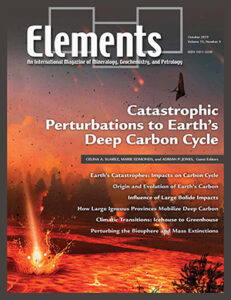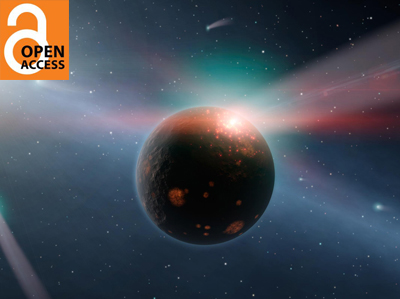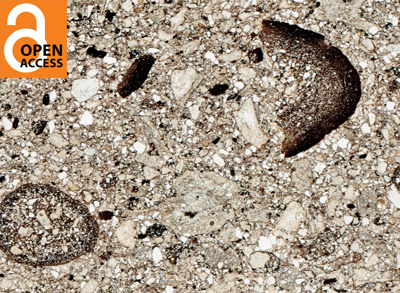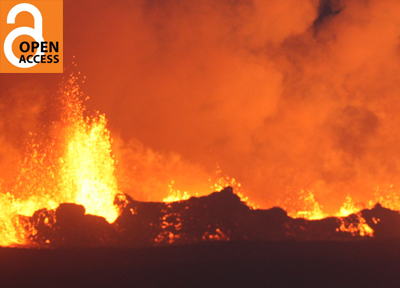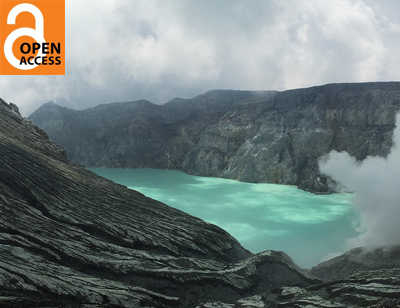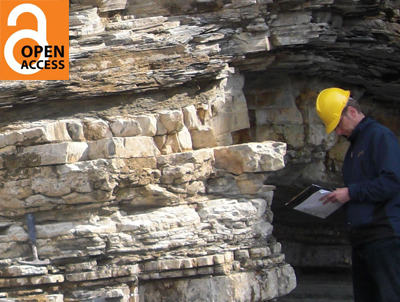Catastrophic Perturbations to Earth's Deep Carbon Cycle
Celina A. Suarez, Marie Edmonds, and Adrian P. Jones – Guest Editors
Table of Contents
Carbon is one of the most important elements on Earth. It is the basis of all life on the planet, is stored and mobilized throughout the Earth from core to crust, and is the basis of the energy sources that are so important to human civilization. This issue will explore the origins of carbon on Earth; the long-term carbon cycle; catastrophic and large-scale perturbations to Earth’s carbon cycle such as large igneous provinces and bolide impacts; carbon’s role in mass extinctions; and icehouse–greenhouse climate transitions in deep time. Deciphering the complex, and often faint, signals of distant carbon catastrophes requires a multidisciplinary effort and the most innovative analytical technology. This thematic collection comes at an important time in which carbon fluxes on Earth are changing rapidly. Society must understand the way in which the deep carbon cycle on Earth works to secure a sustainable future.
- Earth Catastrophes and their Impact on the Carbon Cycle
- On the Origin(s) and Evolution of Earth’s Carbon
- The Influence of Large Bolide Impacts on Earth’s Carbon Cycle
- Deep Carbon and the Life Cycle of Large Igneous Provinces
- Earth’s Outgassing and Climatic Transitions: The Slow Burn Towards Environmental “Catastrophes”?
- Interpreting the Carbon Isotope Record of Mass Extinctions
BIOMIN IV: 15th International Symposium on Biomineralization
CAMECA
Crystal Maker
Excalibur Mineral Corporation
International Association of Geoanalysts
Materials Research Society (MRS 2020 Spring Meeting & Exhibit)
ProtoXRD
Savillex
University of Wisconsin-Madison
Volume 15, Number 6 (December) • Kimberlites From Deep Earth To Diamond Mines
GUEST EDITORS: Andrea Giuliani (University of Melbourne, Macquarie University, Australia) and D. Graham Pearson (University of Alberta, Canada)
Kimberlites are the most deeply derived of all volcanic rocks, as well as the host rock for most of the world’s diamond mines. Kimberlites, therefore, provide unique snap-shots of magma genesis and mantle evolution in the deep Earth well into the diamond stability field (>150 km and, potentially, >700 km). Despite over 100 years of study, the origin of this complex rock-type remains the subject of intense debate. This thematic issue will summarize current knowledge and controversies on kimberlite formation, including key aspects of the petrology, geochemistry and volcanology of these unique rocks. It will show how kimberlites can be successfully dated, and explore links between the temporal and spatial distribution of kimberlites and known geological events. Diamond exploration and resource evaluation methods will be reviewed to demonstrate the inextricable link between an accurate understanding of the characteristics of kimberlites, their entrained mantle cargo, and diamonds.
- Kimberlites from Deep Earth to Diamond Mines: Introduction Andrea Giuliani (University of Melbourne, Macquarie University, Australia) and D. Graham Pearson (University of Alberta, Canada)
- What is Kimberlite? Petrology and Mineralogy Roger H. Mitchell (Lakehead University, Canada), Andrea Giuliani (University of Melbourne, Macquarie University, Australia) and Hugh O’Brien (Geological Survey of Finland)
- Source Regions of Kimberlites: A Geochemical Perspective Graham Pearson (University of Alberta, Canada), Jon D. Woodhead (University of Melbourne, Australia) and Phillip E. Janney (University of Cape Town, South Africa)
- Kimberlites Through Time Larry M. Heaman (University of Alberta, Canada), David Phillips (University of Melbourne, Australia) and Graham D. Pearson (University of Alberta, Canada)
- Kimberlites as Volcanic Rocks: Transport, Ascent and Emplacement Kelly Russell (University of British Columbia, Canada), R. Stephen J. Sparks (University of Bristol, UK) and Janine Kavanagh (University of Liverpool, UK)
- Kimberlites from Source to Surface: Insights from Experiments Stephen F. Foley (Macquarie University, Australia), Bruce A. Kjarsgaard (Geological Survey of Canada) and Gregory M. Yaxley (Australian National University)
- Diamond Exploration and Resource Evaluation of Kimberlites Bruce A. Kjarsgaard (Geological Survey of Canada), Nicole Januszczak (De Beers Exploration Canada Inc.) and Johann Stiefenhofer (Anglo-American Operations Ltd, South Africa).
- Planet Mercury (February 2019)
- Reactive Transport Modeling (April 2019)
- South Aegean Magmatic Arc (June 2019)
- Weathering: A Unifying Process in the Geosciences (August 2019)
- Catastrophic Perturbations to Earth’s Carbon Cycle (October 2019)
- Kimberlites (December 2019)



